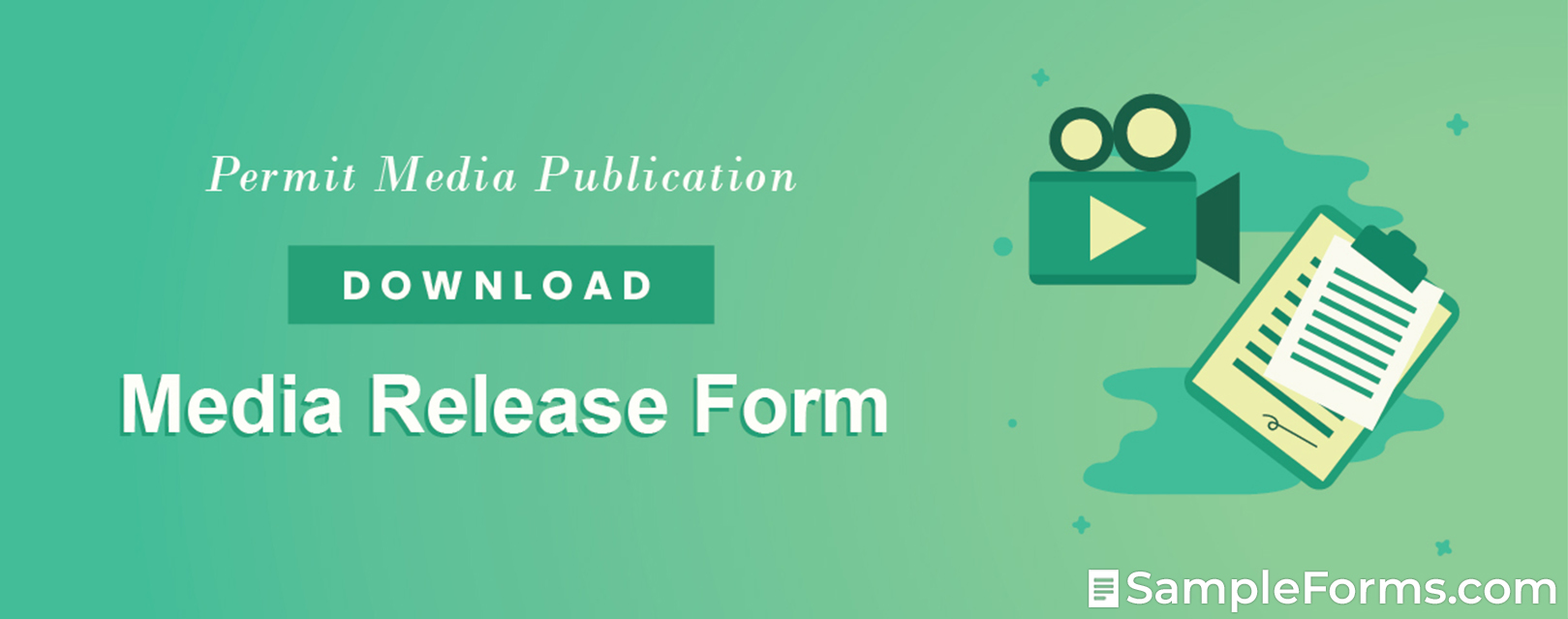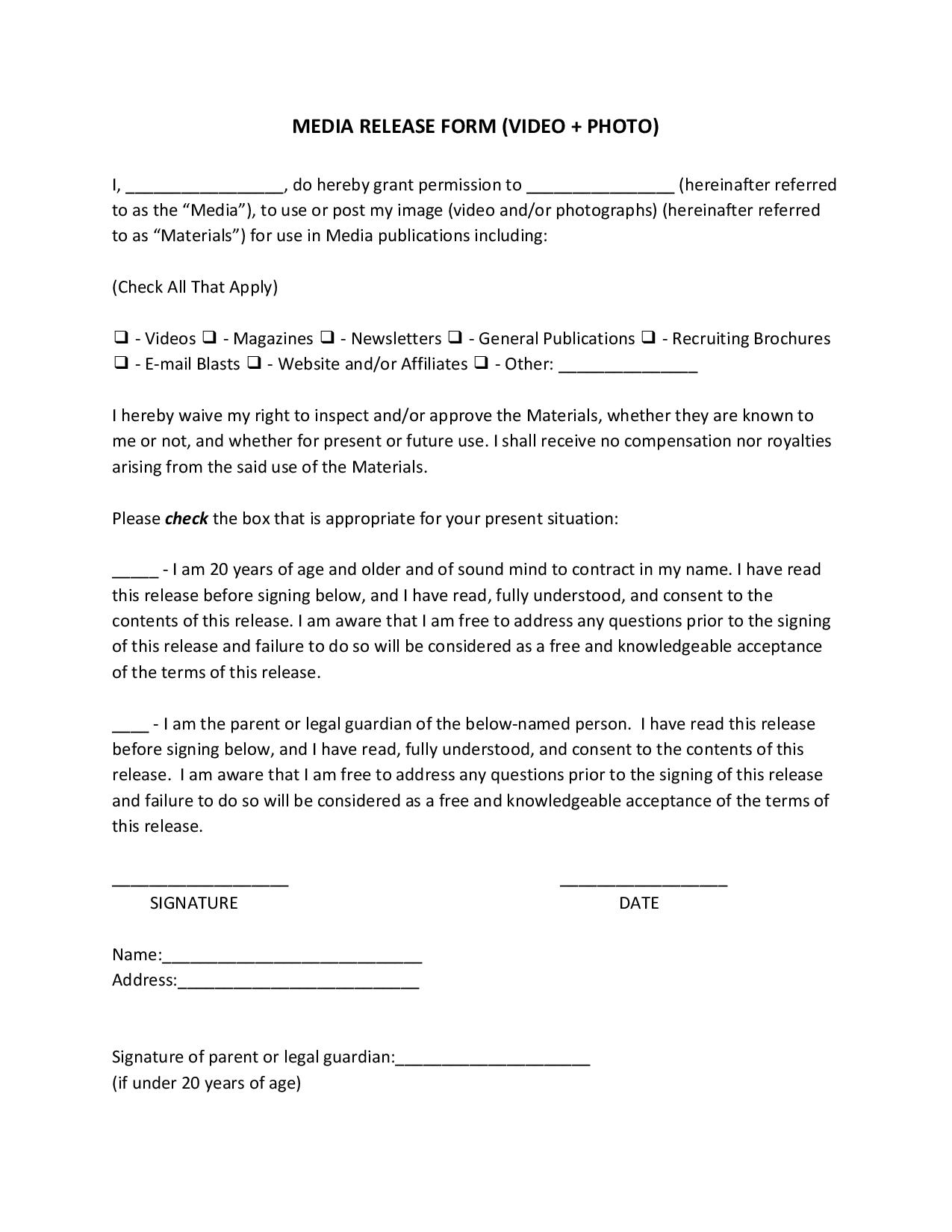- Eviction Notice Forms
- Power of Attorney Forms Forms
- Bill of Sale (Purchase Agreement) Forms
- Lease Agreement Forms
- Rental Application Forms
- Living Will Forms Forms
- Recommendation Letters Forms
- Resignation Letters Forms
- Release of Liability Agreement Forms
- Promissory Note Forms
- LLC Operating Agreement Forms
- Deed of Sale Forms
- Consent Form Forms
- Support Affidavit Forms
- Paternity Affidavit Forms
- Marital Affidavit Forms
- Financial Affidavit Forms
- Residential Affidavit Forms
- Affidavit of Identity Forms
- Affidavit of Title Forms
- Employment Affidavit Forms
- Affidavit of Loss Forms
- Gift Affidavit Forms
- Small Estate Affidavit Forms
- Service Affidavit Forms
- Heirship Affidavit Forms
- Survivorship Affidavit Forms
- Desistance Affidavit Forms
- Discrepancy Affidavit Forms
- Guardianship Affidavit Forms
- Undertaking Affidavit Forms
- General Affidavit Forms
- Affidavit of Death Forms
Media Release Form (Video + Form)
For some, having your videos and photos released to the public is flattering. It gives the individual a temporary celebrity-like feeling. On the other hand, there are some that value their privacy like a pot of gold and despise the temporary limelight. In situations like these, a media release form is a perfect tool to use to obtain permission from the owner of the materials. This ensures that the media release is authorized and being consented to by the individual. This also makes it clear that they should not receive any form of compensation or royalty from the said media. The usage of this form prevents any issues in the future regarding the unauthorized release of media. Know more about this type of release form by reading below. Read More
Media Release Form (Video + Form)
What Is a Media Release Form?
A media release form is a legally binding document that authorizes an individual or a party to produce, reuse, release, take, edit, print, take photos, and edit videos of an individual. If the individual is a minor or below 18 years of age, a parent or legal guardian shall administer the signing of the form. This form is commonly used for advertising, models, talents, and employees. This form is also known as a media consent release.
How to Create a Media Release Form
A standard media release form is easier to make as long as you are guided with these tips:
1. Introduce the Person Granting Permission
Start the media release form by stating the granting of consent to the party. Identify the party whom you are authorizing your materials to. The other party is commonly labeled as media and the videos and photos materials. Use only complete and legal names when identifying both parties.
2. Specify the Authorized Materials To Be Released
The authorized materials should be specified as much as possible. It makes the other party understand what material is authorized and what is not. These materials may be photos, videos, newsletters, general publications, recruiting brochures, e-mail blasts, and websites, and/or affiliates. Furthermore, if a particular media is not specified in the form, indicate it otherwise.
3. Include a Waiver
The waiver in the release form makes the other party understand that you are not to receive any form of compensation or royalties from the media released. You also lose the right to inspect or approve the materials to be released—whether in the future or not.
4. Detail the Age Acknowledgment
There are actually two statements that you need to check as confirmation: One is where you confirm that you are of legal age to be involved in such a document; second is where parental consent is to be required if you are a minor. They are pretty much the same. The only difference is the opening sentence of the paragraph. It also states that you have read, understood, and consented to the terms of the form. You are also free to raise questions regarding the form and that failure to do so may constitute acceptance of the terms.
5. Sign the Release Form
Finish the release form with your dated signature. Don’t forget to include your complete, legal name along with your address. If the individual is a minor, provide a section for the parent’s or legal guardian’s signature.
A media release form template is also available for you in case you do not want to create the form from scratch. The template is equipped with all the necessary details. You need not worry about missing an item or two.
Frequently Asked Questions
Do I need permission to use someone else’s photo or video?
There is no legal requirement to obtain permission to use someone else’s photo or video. However, it may violate their right to privacy, children’s protection, etc. Using a media release form will help you avoid legal complications in the future.
What should be included in a media release form?
You should include your full legal names, the authorized list of media, a waiver, acknowledgment, dated signatures, names, and your address. If you are a minor, the signature of your parent or legal guardian will be required as well. As the person who gives permission, you need to be aware of what you are authorizing because once you consent, there is no turning back. They are free to use to the materials, whenever and however they like. You lose the right to approve or inspect what they use.
What is the purpose of a release form?
A release form gives consent to the party who wishes to produce or release your materials to the public. This form waives your right to inspect or approve what they release to the public. As well as the right to gain compensation and royalties from the materials. A parental consent must be required if you are a minor.
Can I still sue after I have signed the release?
That depends on the release form signed. According to Nolo, the court will have to look into the release form if you have particularly waived your right to claim in the release. Your state’s law and the wording will be the important factors when determining this.
Who is the releasor and who is the releasee?
The releasor is the person who waives the right over the materials used. They give permission to the other party to use the materials however they wish. The releasee is the person who is granted consent to use the materials.
One of our constitutional rights is the right to privacy. It’s one of the things that cannot be taken away from you. As a member of the media, asking for an individual’s consent is one way of respecting such rights. A media release form will ensure that no rights will be violated and that the owner of the media authorizes the release of the materials. The form also consists of terms pertaining to the release such as the authorized materials, waiver, and acknowledgment. No matter what the purpose of these materials is, it’s always wise to ask consent with the use of this media release form.

